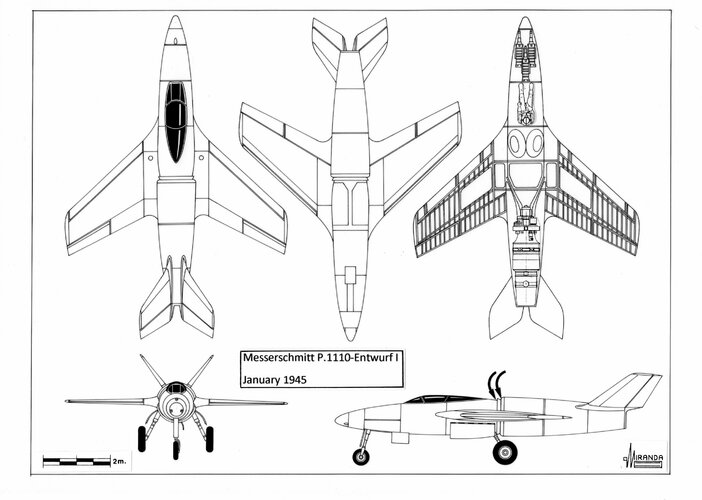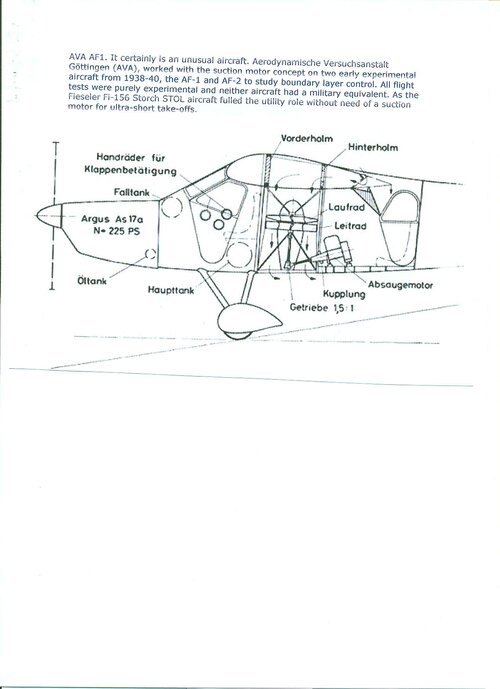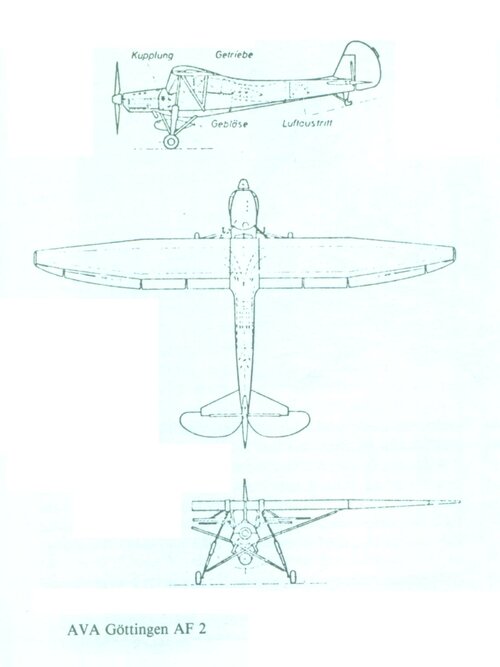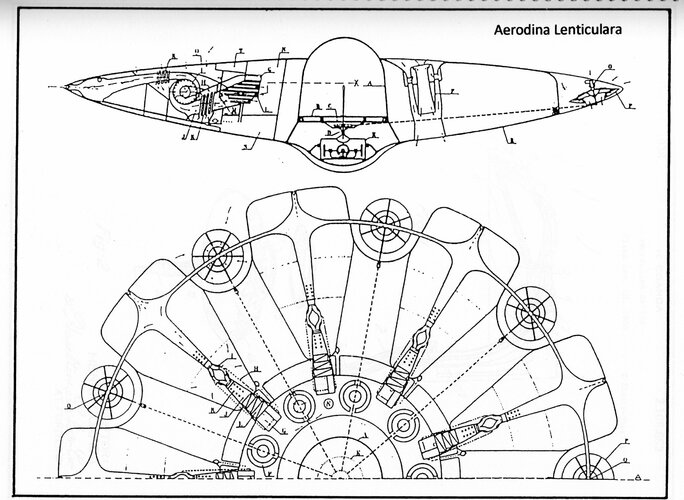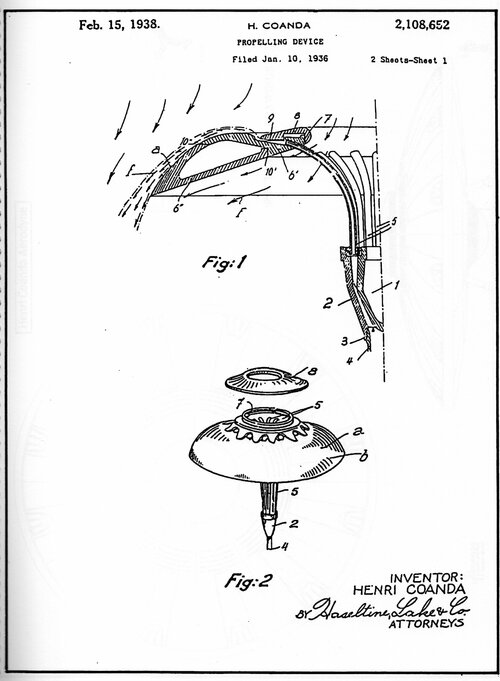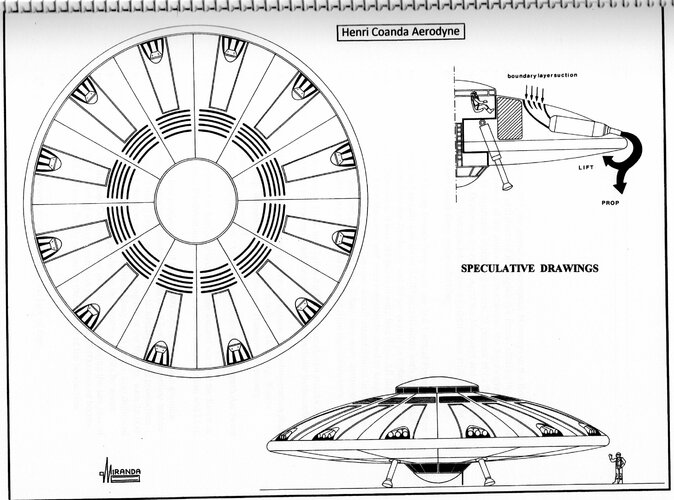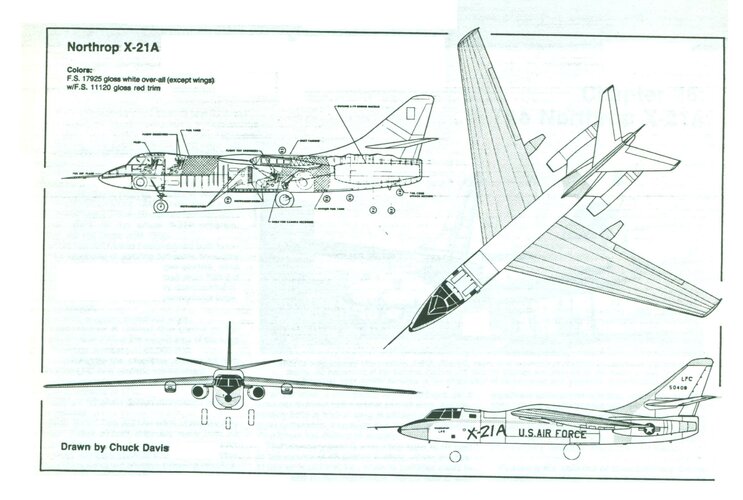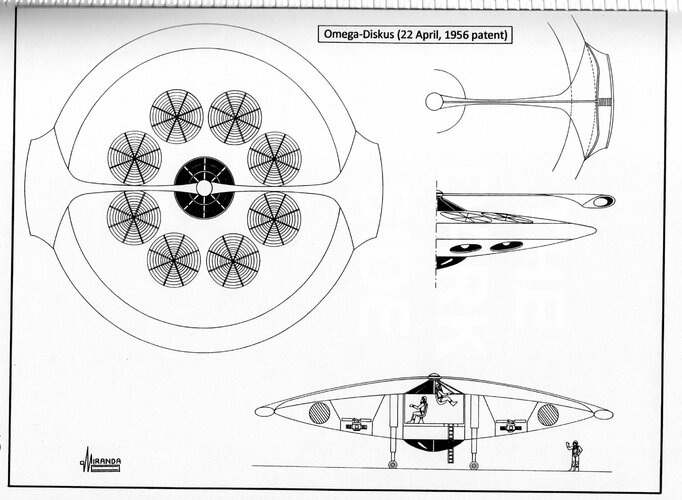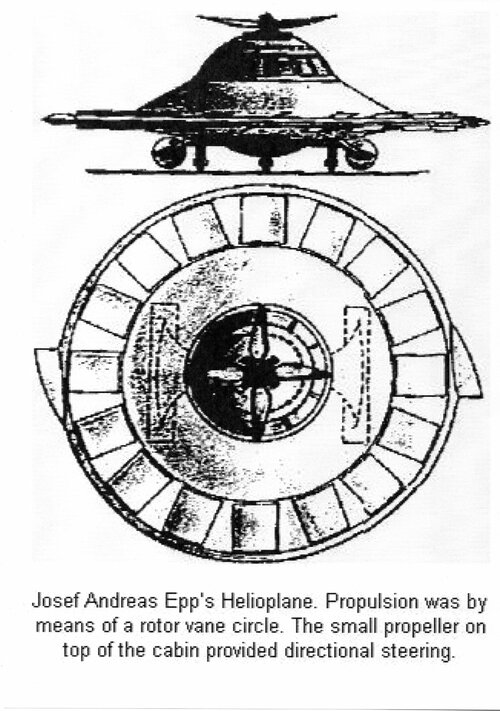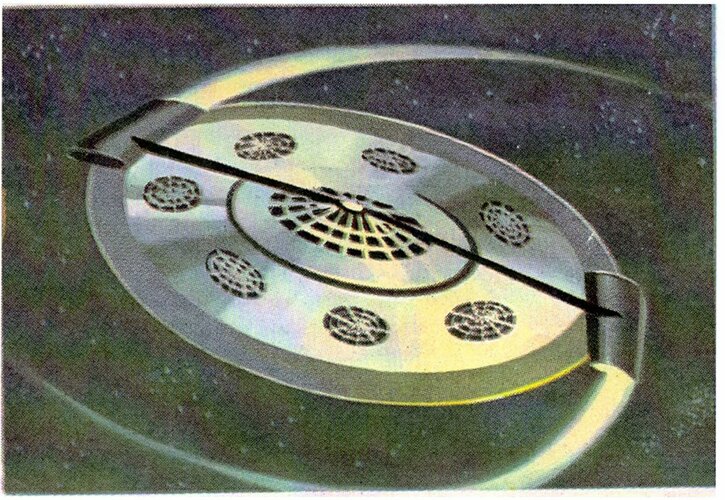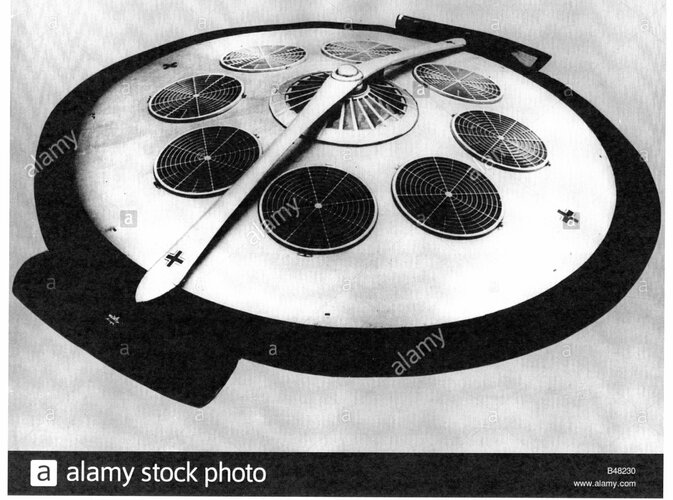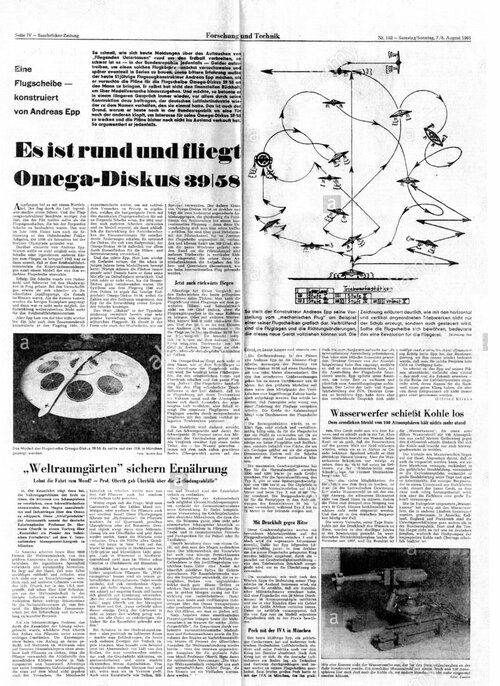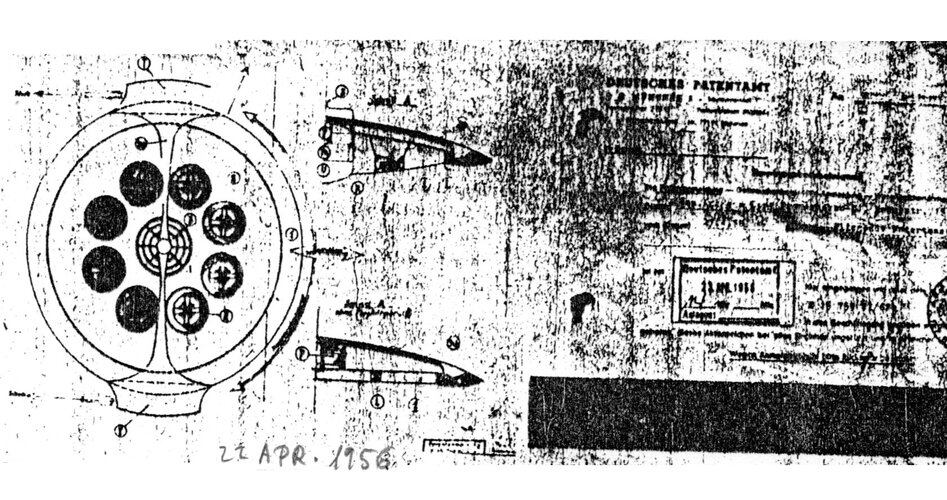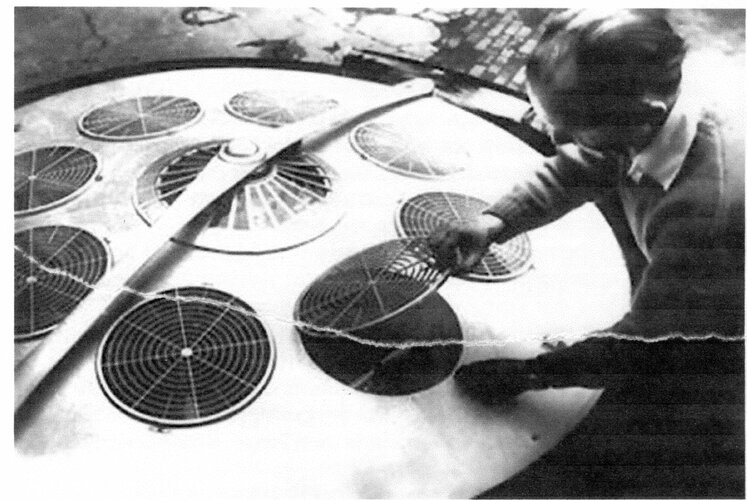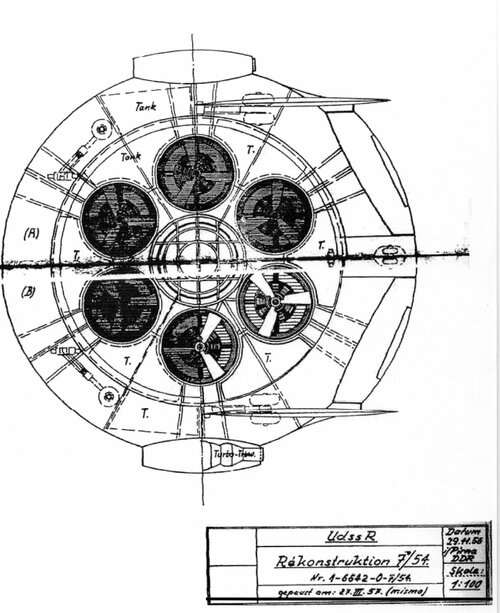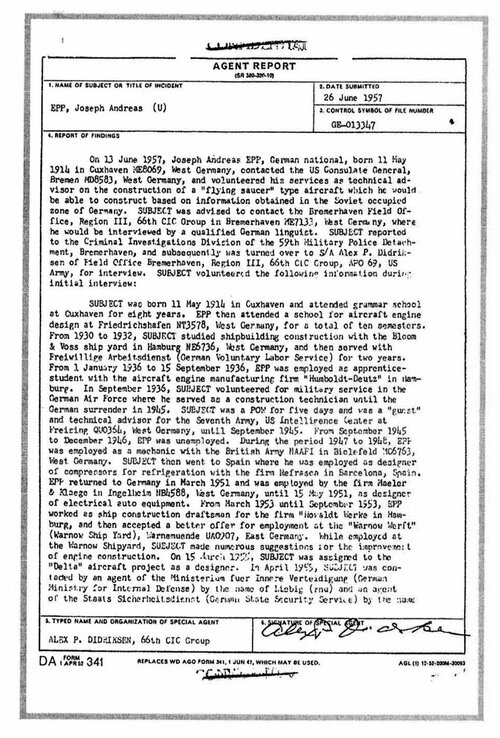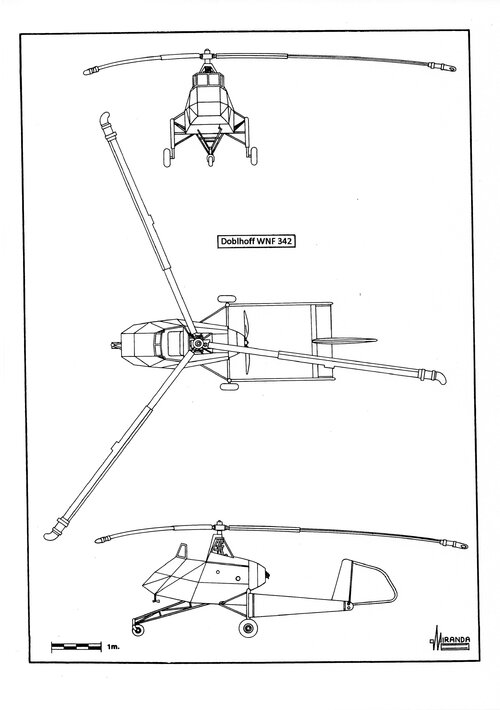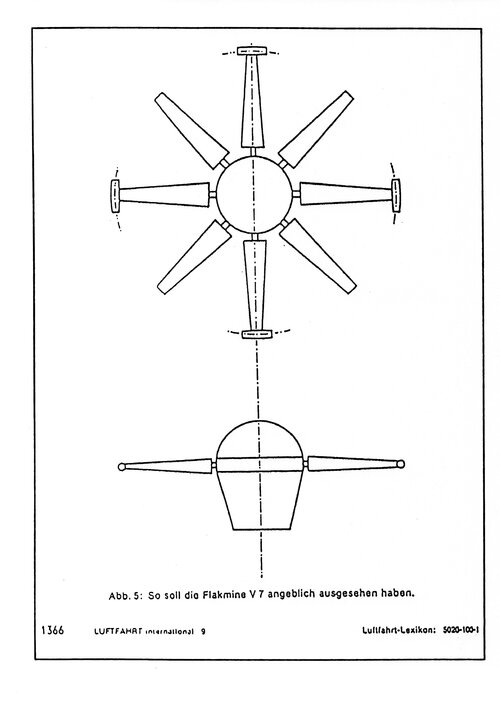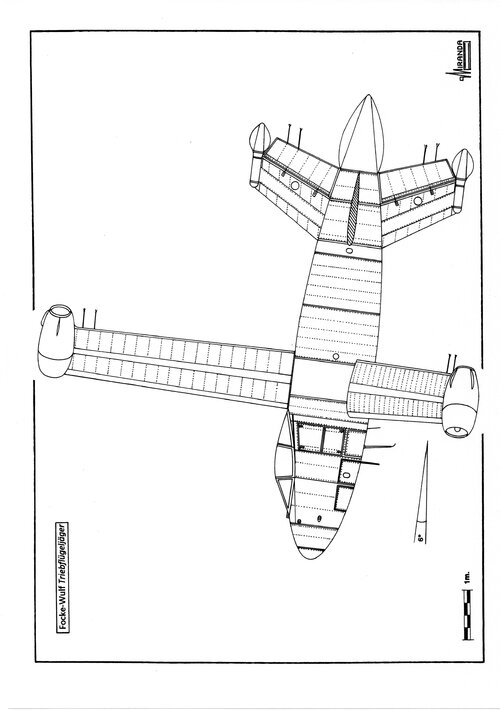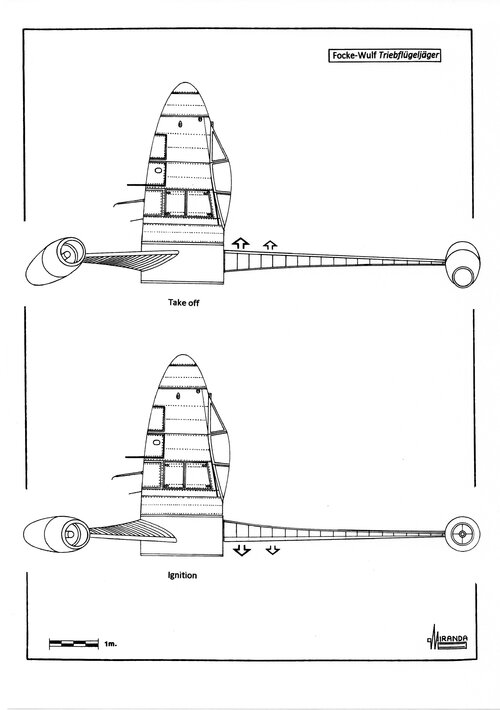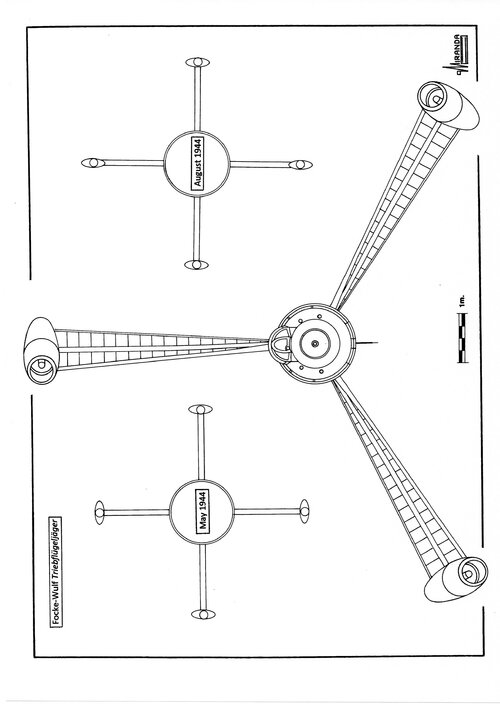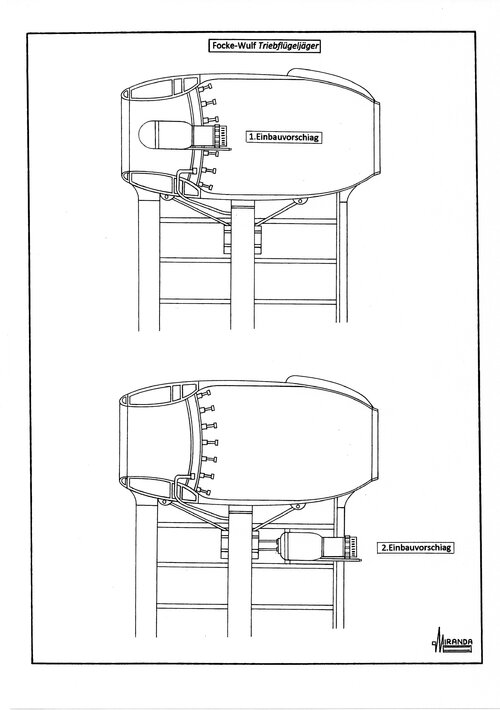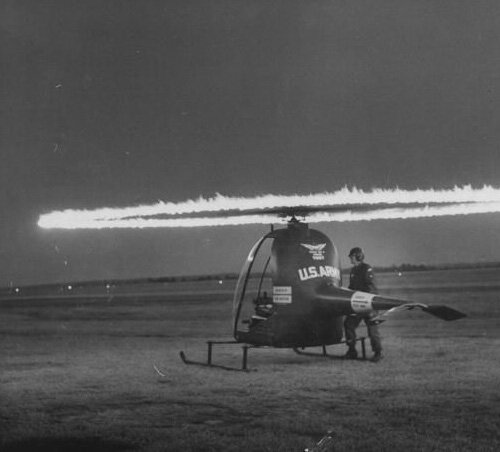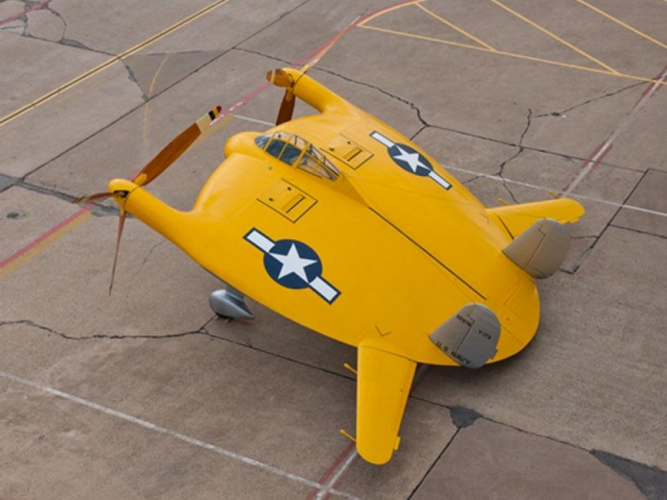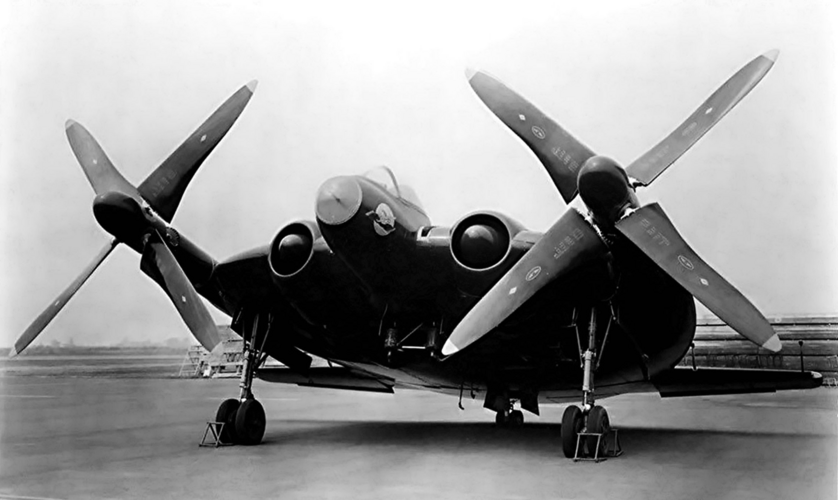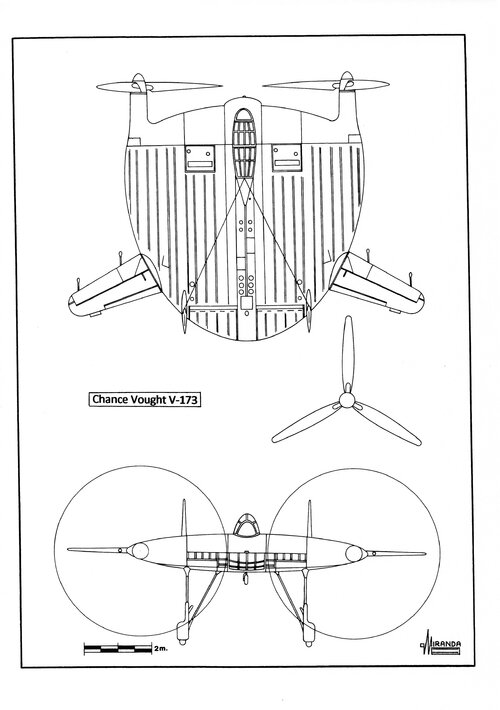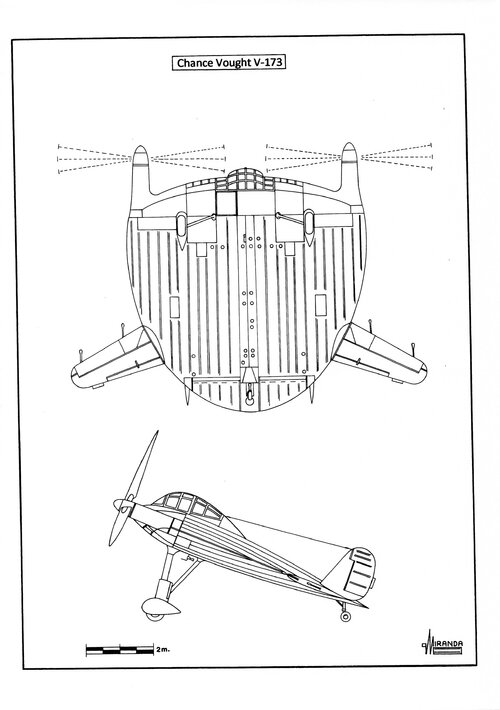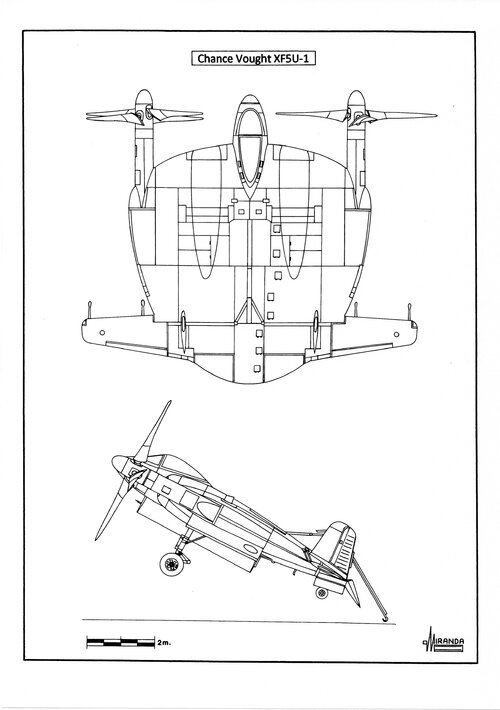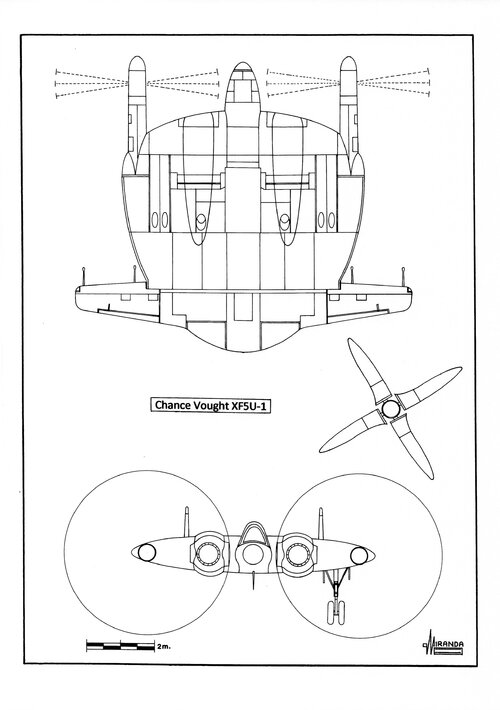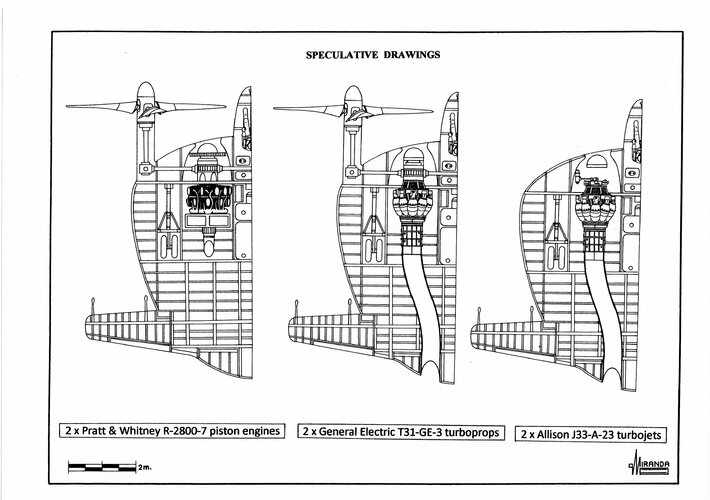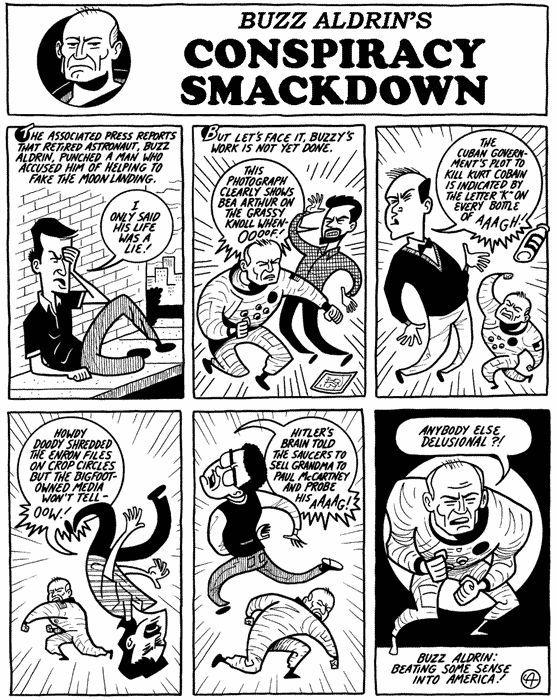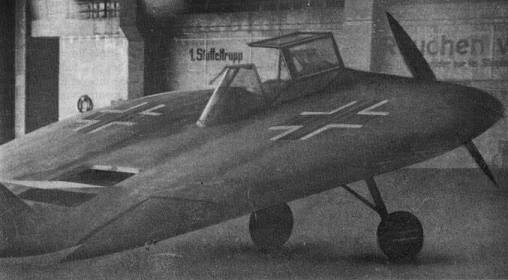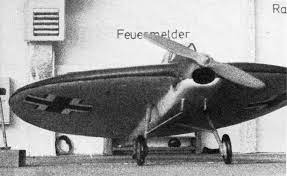- On July 15, 1944, the Luftwaffe Technisches Amt issued the Jägernotprogramm specification, calling for an air superiority fighter powered by a 1,300 kp thrust HeS 011 A-0 turbojet, at a time when the British turbojets already generated over 2,000 kp.
In November, some ground tests carried out with the Messerschmitt Me 262 W.Nr.130015, showed that the internal drag in the air ducts reduced the turbojet thrust by 45 kp for each meter in long.
The German designers were forced to imagine new aerodynamic solutions to reduce the drag coefficient in the air ducts. Twin booms and tailless configurations with short fuselage avoided the loss of thrust associated with the long tail pipe, and the long air duct used with nose air intakes was avoided by the installation of two lateral intakes with short S-shaped ducts. Unfortunately for the Germans, with this configuration the air scoops were placed in the air turbulent zone generated over the wing upper surface by the Coanda Effect, and the loss of performance was estimated between 4 per cent and 14 per cent.
To reduce the drag coefficient at high speeds the designers of the Messerschmitt P.1110 fighter employed two boundary layer suction inlets placed ahead of the lateral air scoops. The turbulent air was sucked by means of a special extractor fan.
The Germans were extremely interested in the research by Henri M. Coanda, the Romanian aeronautical engineer that discovered the Coanda Effect in 1934 and designed the Aerodina Lenticulara flying saucer in 1935. On February 15 and September 27, 1938 Coanda received two French patents about airflow acceleration over the periphery of a concave disc. On May 9, 1939 Coanda patented a new propelling device to increase the wings lift.
During the German occupation of Paris, Coanda was forced to design a 20 m of diameter aerodyne powered by twelve Jumo 004 jet engines mounted in a radial pattern with the exhaust pipes directed towards the external ring, where the Coanda Effect produced six tons of lifting power per square yard. The air sucked through sixty slots (Lüftungs) installed around the cockpit crating a lifting power derived from vacuum effect on the disc upper surface. The air passed a toroidal plenum chamber (Zentraltur-Binenanlage) from where it was sucked by the turbojets and expelled towards the thick peripheral ring. Control was achieved by differential acceleration of the engines.
In 1937, a number of scientists and engineers from the AVA-Göttingen research center started experiments with suction inlets installed in the wing of a Junkers AT. 1 light plane. During the flight tests program an efficiency of 22 per cent was obtained with a 20 hp suction device. In 1940 was achieved a lift coefficient of 5 using a 45 hp suction fan mounted in the engine of a Fieseler Storch AT.2.
Between 1941 and 1943 the Messerschmitt Bf 109 V-24 prototype was fitted with blown flaps to improve low-speed handling. By 1944 some tests were conducted at Daimler-Benz/Stuttgart with one Bf 109 G-6 fitted with a Caudron built aile soufflé and one 9,000 rpm suction-fan blower system built by AVA. But the suction at high transonic speed required a considerable amount of power.
In February 1940, the tailless jet fighter project Lippisch P 01-112 was fitted with a suction device powered by one Bramo/BMW 3302 turbojet. In April 1943, the Arado design team proposed to use the Ar 232 A-05 prototype as flying laboratory fitted with a suction boundary layer control system powered by a cold rocket Walter HWK RI-203.
All these suction devices involved cutting slots (Lüftungs) into an aircraft’s wings, but the first attempts to use multiple slots to increase the suction rate did not achieve satisfactory results. The problem of more efficient suction led the German engineers to new research into porous surfaces with small holes.
At the end of 1944, the German foamed-metallurgy conducted experiments with porous Aluminum/Iron/Bronze alloys using the superplastic-deformation/diffusion-bonding technology. The new porous material, named Luftschwamm by the Göttingen scientist, would allow to eliminate the air scoops of the transonic fighters by delaying 1/10 Mach the apparition of compressibility shockwaves. But the work was discontinued without explanation in 1945.
The mystery was finally solved in April 1963 during the Mach 0.77 tests flights performed by the Northrop X-21A, an experimental prototype fitted with a porous breathing wing with thousands of tiny slots with 0.0035- inch width. The results were doubtful practically, because the obstructions of the slots by insects, dust, rain, and other environmental anomalies.
In November, some ground tests carried out with the Messerschmitt Me 262 W.Nr.130015, showed that the internal drag in the air ducts reduced the turbojet thrust by 45 kp for each meter in long.
The German designers were forced to imagine new aerodynamic solutions to reduce the drag coefficient in the air ducts. Twin booms and tailless configurations with short fuselage avoided the loss of thrust associated with the long tail pipe, and the long air duct used with nose air intakes was avoided by the installation of two lateral intakes with short S-shaped ducts. Unfortunately for the Germans, with this configuration the air scoops were placed in the air turbulent zone generated over the wing upper surface by the Coanda Effect, and the loss of performance was estimated between 4 per cent and 14 per cent.
To reduce the drag coefficient at high speeds the designers of the Messerschmitt P.1110 fighter employed two boundary layer suction inlets placed ahead of the lateral air scoops. The turbulent air was sucked by means of a special extractor fan.
The Germans were extremely interested in the research by Henri M. Coanda, the Romanian aeronautical engineer that discovered the Coanda Effect in 1934 and designed the Aerodina Lenticulara flying saucer in 1935. On February 15 and September 27, 1938 Coanda received two French patents about airflow acceleration over the periphery of a concave disc. On May 9, 1939 Coanda patented a new propelling device to increase the wings lift.
During the German occupation of Paris, Coanda was forced to design a 20 m of diameter aerodyne powered by twelve Jumo 004 jet engines mounted in a radial pattern with the exhaust pipes directed towards the external ring, where the Coanda Effect produced six tons of lifting power per square yard. The air sucked through sixty slots (Lüftungs) installed around the cockpit crating a lifting power derived from vacuum effect on the disc upper surface. The air passed a toroidal plenum chamber (Zentraltur-Binenanlage) from where it was sucked by the turbojets and expelled towards the thick peripheral ring. Control was achieved by differential acceleration of the engines.
In 1937, a number of scientists and engineers from the AVA-Göttingen research center started experiments with suction inlets installed in the wing of a Junkers AT. 1 light plane. During the flight tests program an efficiency of 22 per cent was obtained with a 20 hp suction device. In 1940 was achieved a lift coefficient of 5 using a 45 hp suction fan mounted in the engine of a Fieseler Storch AT.2.
Between 1941 and 1943 the Messerschmitt Bf 109 V-24 prototype was fitted with blown flaps to improve low-speed handling. By 1944 some tests were conducted at Daimler-Benz/Stuttgart with one Bf 109 G-6 fitted with a Caudron built aile soufflé and one 9,000 rpm suction-fan blower system built by AVA. But the suction at high transonic speed required a considerable amount of power.
In February 1940, the tailless jet fighter project Lippisch P 01-112 was fitted with a suction device powered by one Bramo/BMW 3302 turbojet. In April 1943, the Arado design team proposed to use the Ar 232 A-05 prototype as flying laboratory fitted with a suction boundary layer control system powered by a cold rocket Walter HWK RI-203.
All these suction devices involved cutting slots (Lüftungs) into an aircraft’s wings, but the first attempts to use multiple slots to increase the suction rate did not achieve satisfactory results. The problem of more efficient suction led the German engineers to new research into porous surfaces with small holes.
At the end of 1944, the German foamed-metallurgy conducted experiments with porous Aluminum/Iron/Bronze alloys using the superplastic-deformation/diffusion-bonding technology. The new porous material, named Luftschwamm by the Göttingen scientist, would allow to eliminate the air scoops of the transonic fighters by delaying 1/10 Mach the apparition of compressibility shockwaves. But the work was discontinued without explanation in 1945.
The mystery was finally solved in April 1963 during the Mach 0.77 tests flights performed by the Northrop X-21A, an experimental prototype fitted with a porous breathing wing with thousands of tiny slots with 0.0035- inch width. The results were doubtful practically, because the obstructions of the slots by insects, dust, rain, and other environmental anomalies.

